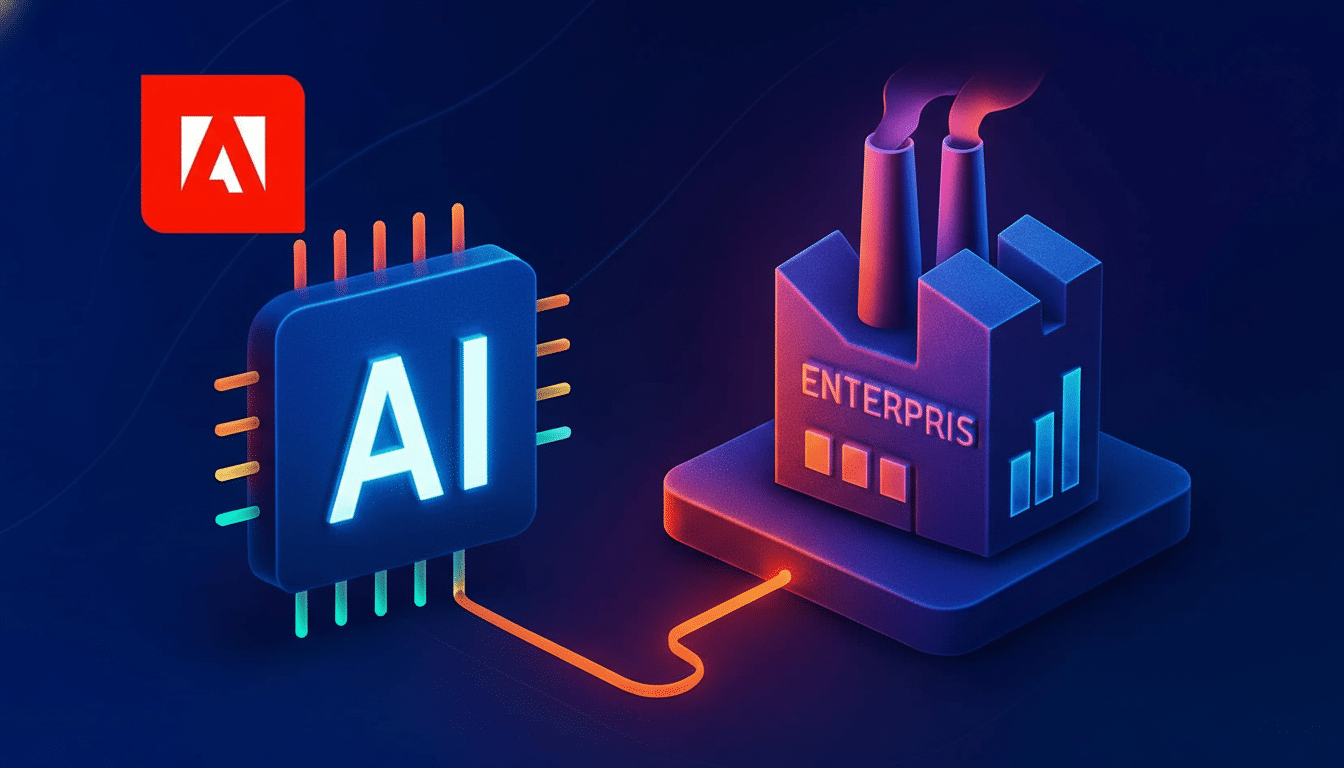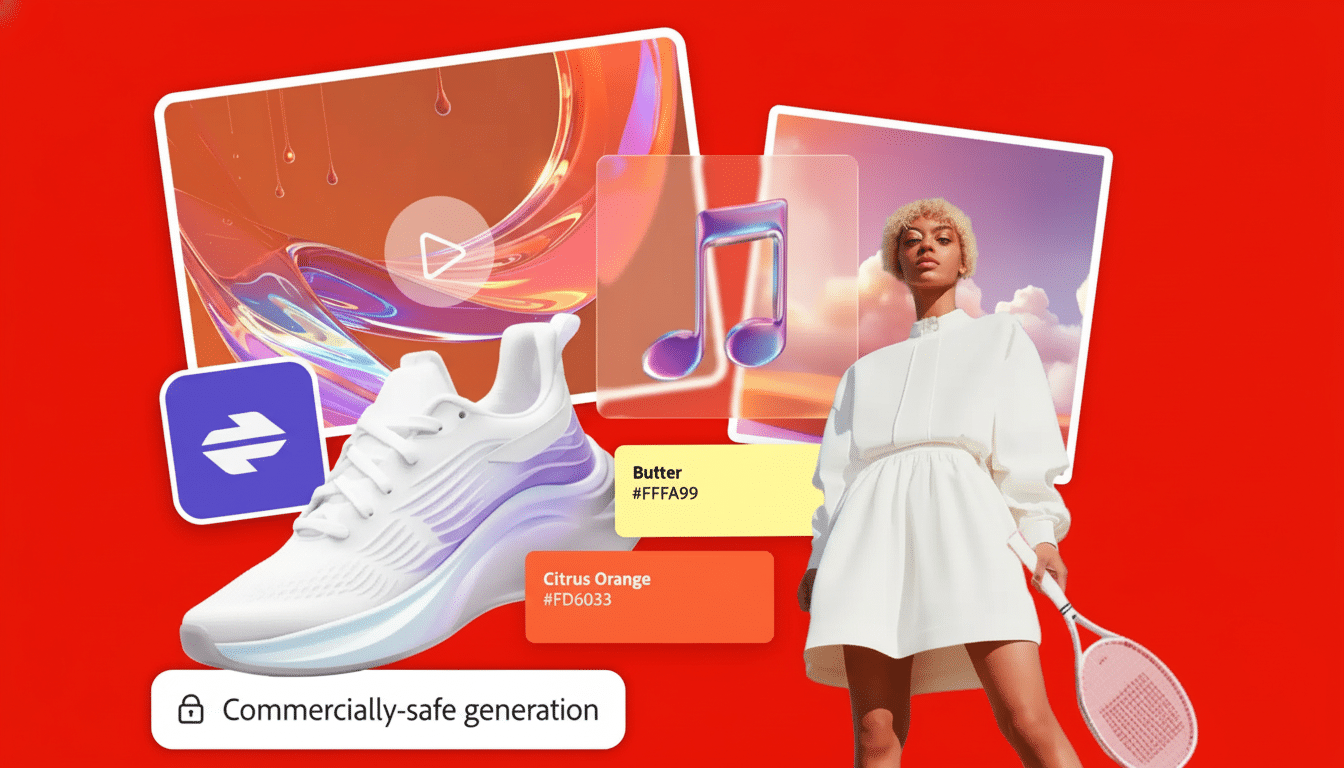Adobe is offering a solution to the stickiest problem in generative AI: making sure your results don’t open you up to liability for copyright infringement. (Today, through the product it will announce, called AI Foundry, it will endeavor to provide enterprises with a method for building custom models trained on their own permissible (as in approved) intellectual property, with provenance tools and IP indemnification that claims to make outputs commercially safe for projects.)
Why Copyright Risk Is the Achilles’ Heel of Generative AI
Generative systems have awed with their speed and scale, but many were trained on data that was scraped from around the web, bringing legal uncertainty about who owns what. Ongoing cases such as The New York Times’ lawsuit against OpenAI and Microsoft, and Getty Images’ action against Stability AI underscore the peril for brands that put outputs they produce into advertising, packaging or product experiences.
- Why Copyright Risk Is the Achilles’ Heel of Generative AI
- What AI Foundry Is Offering Enterprises for Safer AI
- Between Indemnity And Provenance Is Where The Real Breakthrough Lies
- What Marketers And Designers Need To Consider
- Limits and Open Questions About Indemnity and Provenance
- The Competitive and Regulatory Context for Enterprise AI
- Bottom Line for Enterprise AI Adoption and Legal Risk

Compliance teams fret over the provenance of sources, model transparency and whether “fair use” will stand up in court. When firms like Gartner and Deloitte survey such things, they always rank IP and data risk as one of the highest barriers to AI adoption in enterprise. In short, it hasn’t been a technical issue with scaled deployments, but one of legal ambiguity that has acted as the gating item.
What AI Foundry Is Offering Enterprises for Safer AI
AI Foundry enables enterprises to collaborate with Adobe experts to develop custom generative models on top of Firefly, Adobe’s suite for text, image, audio, and video. The pitch: train on first-party brand assets and licensed sources versus the Wild West of the open internet, while enforcing brand rules inside the model to ensure that outputs look consistent with visual identity, product lines and tone.
Firefly’s base training data is from licensed sources such as Adobe Stock, public domain content and media from partners who have allowed use. For enterprises, Foundry builds on that model by adding a company’s own IP to the mix with governance controls. Our aim is twofold: to reduce the risk of infringement, and to avoid the generic look that characterizes so many AI-generated campaigns.
Between Indemnity And Provenance Is Where The Real Breakthrough Lies
Adobe is not just pledging “safer” data; it’s adding legal teeth. Firefly outputs within customer enterprise workflows are IP indemnified by the company, meaning that customers are covered should a warranted claim arise when working with generated content. By combining that legal shield with customer-owned training sets, it negates the risk that general counsels have found makes them skittish.
Content Credentials, Adobe’s instantiation of the C2PA standard that cryptographically binds provenance metadata to media, is no less significant. Brands can see when, how and with which tool a piece of content was made or edited. For regulated industries and those markets that have implemented tougher AI transparency rules, that audit trail is quickly moving from “nice-to-have” to essential.
What Marketers And Designers Need To Consider
Marketing teams are confronted with a tidal wave of demand. “According to Adobe’s own research, 71 percent of marketers are predicting that content demand will increase more than five times by 2027.” It’s a challenge to hit that pace safely. Foundry’s approach — brand-tuned models, rights-cleared training data, provenance by default, and indemnity — is designed with both scale and compliance in mind.

Imagine a worldwide retailer that creates tens of thousands of localized product images. A Foundry model, trained on the retailer’s catalog and style guides, could generate consistent pictures with a reduced likelihood that an unforeseen element in the background or texture is dependent on someone else’s IP. It’s not only for aesthetics; that consistency is also legal hygiene baked into the workflow.
Limits and Open Questions About Indemnity and Provenance
No indemnity scheme offers a complete panacea. If it uploads third-party assets that don’t have the proper rights, or if it coaxes a model to imitate the signature style of a living artist, well—exposure. Custom models fine-tuned only on rights-cleared content may also sacrifice some coverage compared with frontier systems trained over huge internet-scale corpora.
Enterprises will continue to require governance: access controls, timeliness policies, human review for sensitive campaigns, and retention rules for training data. And as courts untangle when fair use ends and derivative works start, indemnity terms and model agreements will require regular updates to keep up with the law.
The Competitive and Regulatory Context for Enterprise AI
Adobe’s is not the only legal cover out there. Microsoft’s Copilot Copyright Commitment and Google’s enterprise indemnities adopt the same strategy. Where C2PA and its partners nerd out is in content provenance, with tighter controls on training data sources, along with a more native integration into Creative Cloud and Experience Cloud, where many brand workflows already live.
Regulators are raising the bar. The EU AI Act also stipulates that documentation of training data is necessary for high-risk systems, and the U.S. Copyright Office is investigating how copyright should apply to AI-made works. As these regulations solidify, models with transparent data lineage and embedded provenance will be able to more easily enter production.
Bottom Line for Enterprise AI Adoption and Legal Risk
Generative AI won’t achieve real enterprise scale until legal risk is nullified. By bringing a licensed training source to bear, protecting the customer’s own IP, and offering Content Credentials and indemnification, Adobe AI Foundry comes closer to that bar than many. It doesn’t eliminate all risks, but it recasts the discussion from “Can we use this?” to “How quickly can we roll it out in a responsible way?”

